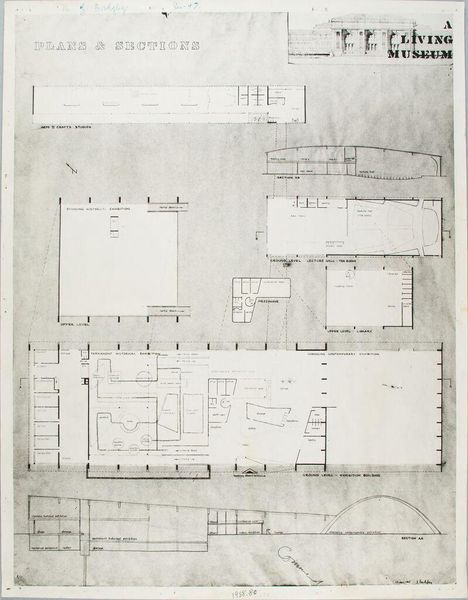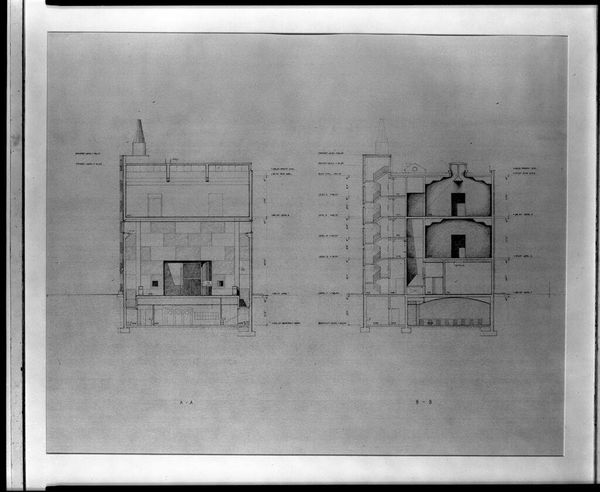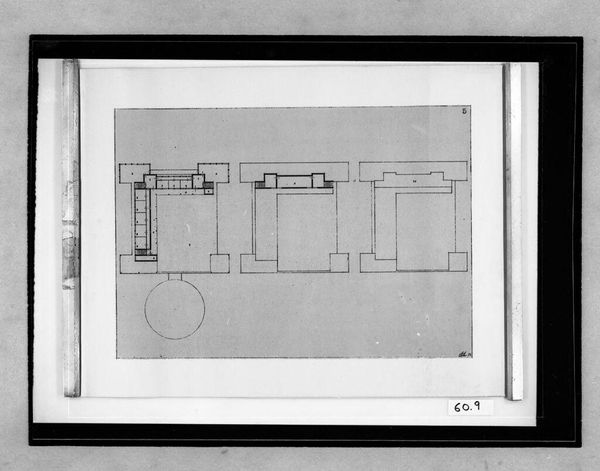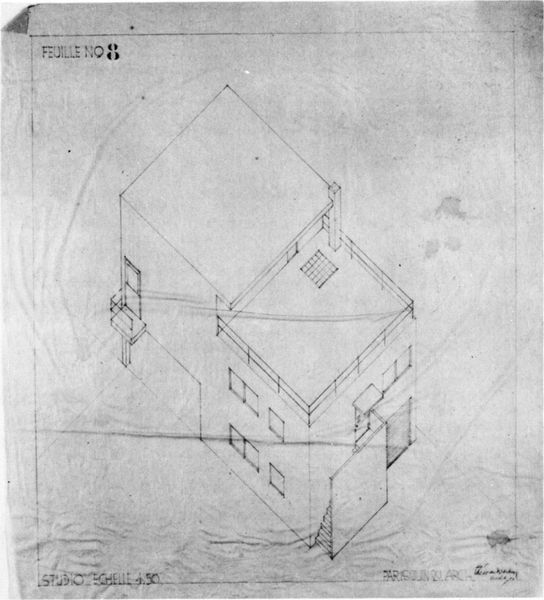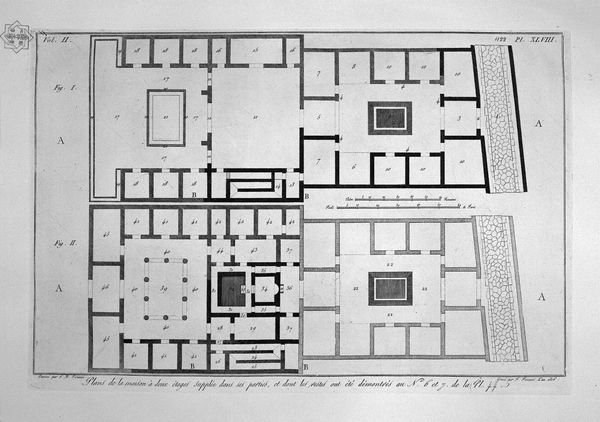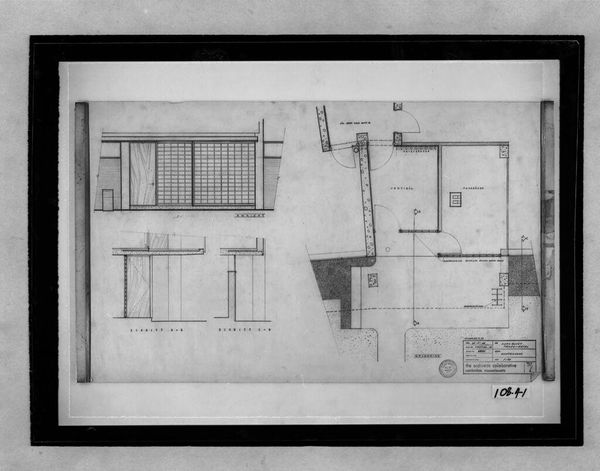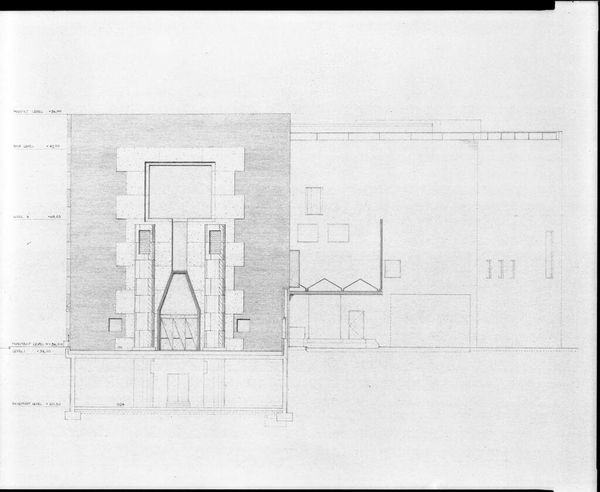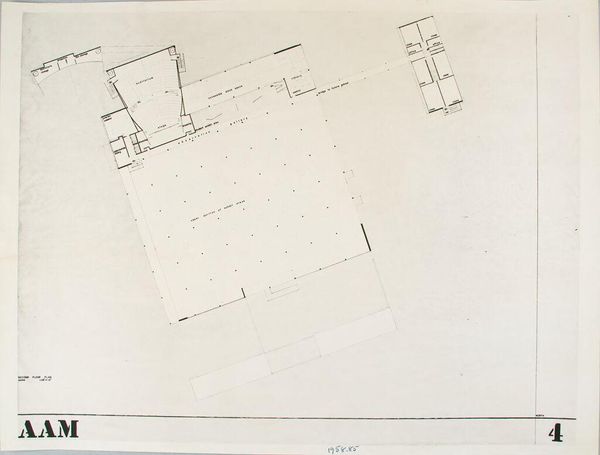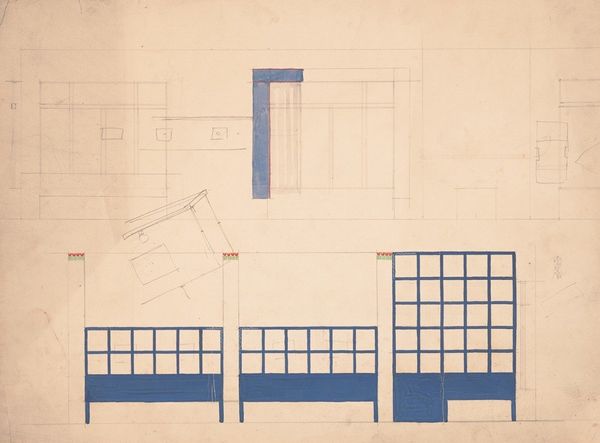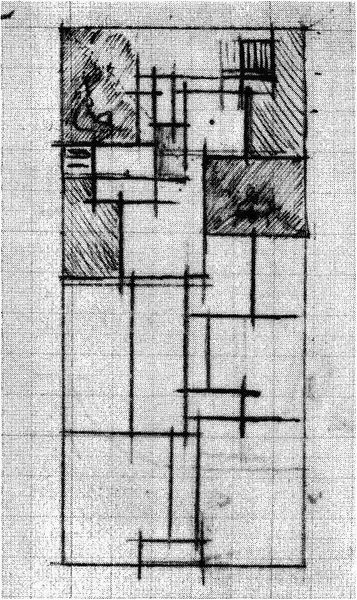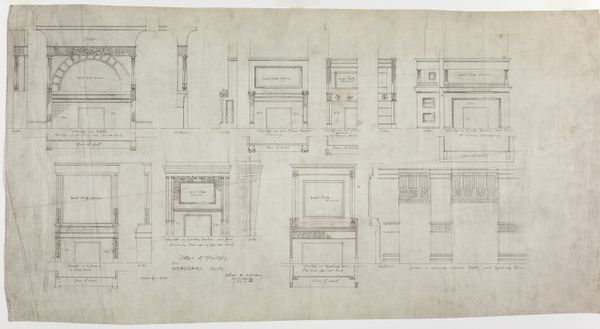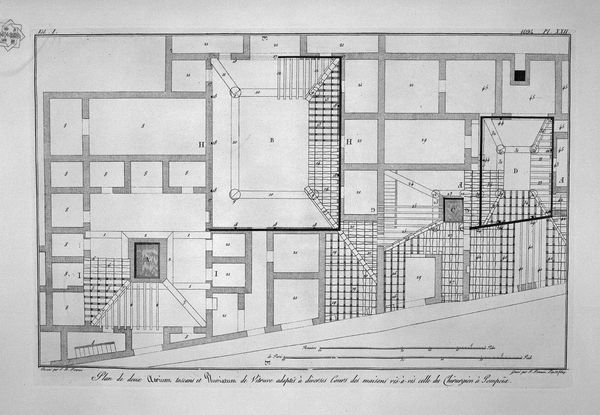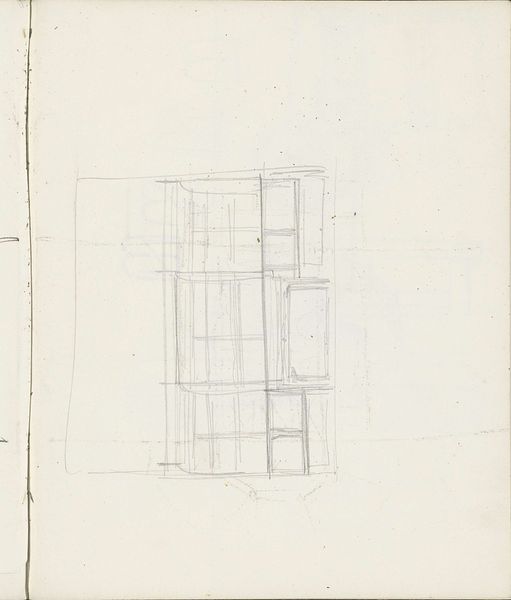
drawing, architecture
#
drawing
#
de-stijl
#
architectural plan
#
text
#
geometric
#
architectural drawing
#
line
#
architecture
Copyright: Public domain
Curator: Staring at this blueprint feels like I'm gazing into the architectural equivalent of a Mondrian painting. Editor: Indeed! What we have here is Theo van Doesburg’s "Design for a house and studio for Bertalan Pór," showcasing elevations and plans, and a fantastic example of the De Stijl movement’s architectural ambitions. Curator: You know, it’s all rectangles and severe angles. But then my eye softens, finding unexpected beauty in these crisp, dark lines charting domesticity and the creation of art. A house *and* a studio, how delicious! Editor: De Stijl sought a universal language of form. Look how van Doesburg employs minimalist geometry, right angles, and precise proportions. It reflects the utopian ideals that permeated early 20th-century art and architecture. This wasn't just about building a house, but constructing a new world. Curator: Do you think Bertalan Pór liked it? Imagine living in something so… intentional. Like being inside an ideology. Still, that flat roof invites sunbathing, I'm sure. Editor: The design certainly aligns with Pór's own artistic leanings; he was a Hungarian painter with connections to various avant-garde movements, so this house was meant as an extension of the visual languages of its time. There is definitely a social program encoded in the work’s emphasis on rational design and functional living spaces. Curator: The funny thing about utopias, isn't it, is that even in principle, it’s impossible for everyone to agree, for something to satisfy all tastes or fulfill every single desire! Editor: That’s true, but this design serves as a pivotal document for understanding how early modernists sought to redesign daily life through art and architecture. We must also not underestimate that architecture at the time involved more male architects than now! Curator: I love pondering a drawing like this. Makes you consider all the unbuilt potential inside the lines. Editor: It challenges us to reimagine the possibilities embedded in built space and asks profound questions about the intersection of art, life, and social ideals.
Comments
No comments
Be the first to comment and join the conversation on the ultimate creative platform.
